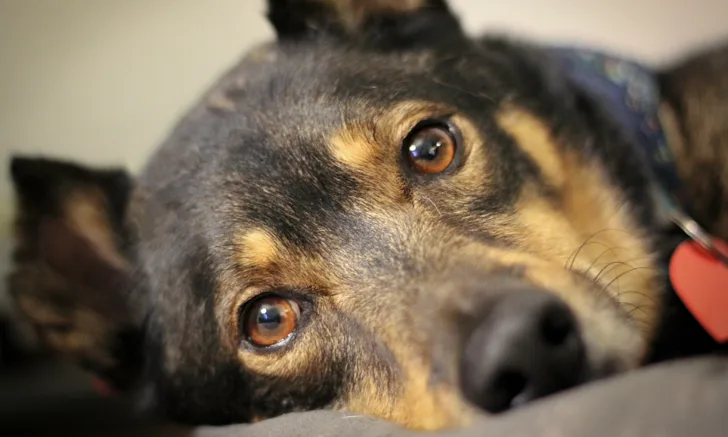Vestibular Dysfunction in a Geriatric Dog
Mark Troxel, DVM, DACVIM (Neurology), Massachusetts Veterinary Referral Hospital, Woburn, Massachusetts

A 12-year-old spayed rottweiler crossbreed is presented for emergency evaluation following sudden onset ataxia in all limbs. She is ambulatory without support but veers and stumbles to the right and occasionally falls to the right when walked on a leash. She also compulsively circles to the right when not on a leash in the examination room.
On neurologic examination, she is quiet and alert but appears disoriented and has a mild head tilt to the right. Cranial nerve examination reveals a resting horizontal nystagmus with fast phase to the left. When placed on her back, there is a positional rotary nystagmus with fast phase to the left. The remainder of the cranial nerve examination is normal. General proprioception and hopping are normal in all limbs. Patellar reflexes are normal bilaterally, and withdrawal reflexes are normal in all limbs. There is no evidence of hyperesthesia.
Neurologic examination results suggest right peripheral vestibular disorder. Differential diagnoses include idiopathic vestibular disease (ie, old dog vestibular, geriatric dog vestibular), otitis interna, hypothyroidism, aural neoplasia (eg, squamous cell carcinoma, ceruminous gland adenocarcinoma), trauma, ototoxicity, and other less common disorders.
CBC, serum chemistry profile, and total thyroxine (tT4) results are within normal limits. Otoscopic examination is attempted, but a large amount of hair in the horizontal ear canal obstructs visualization of the tympanic membrane.
Presumptive diagnosis is idiopathic vestibular disease, as there is no history suggestive of otitis media/interna (eg, head shaking, pawing/scratching ears or sides of face, rubbing side of head on objects), no recent use of ototoxic medications or topical cleaning agents, and no recent trauma.